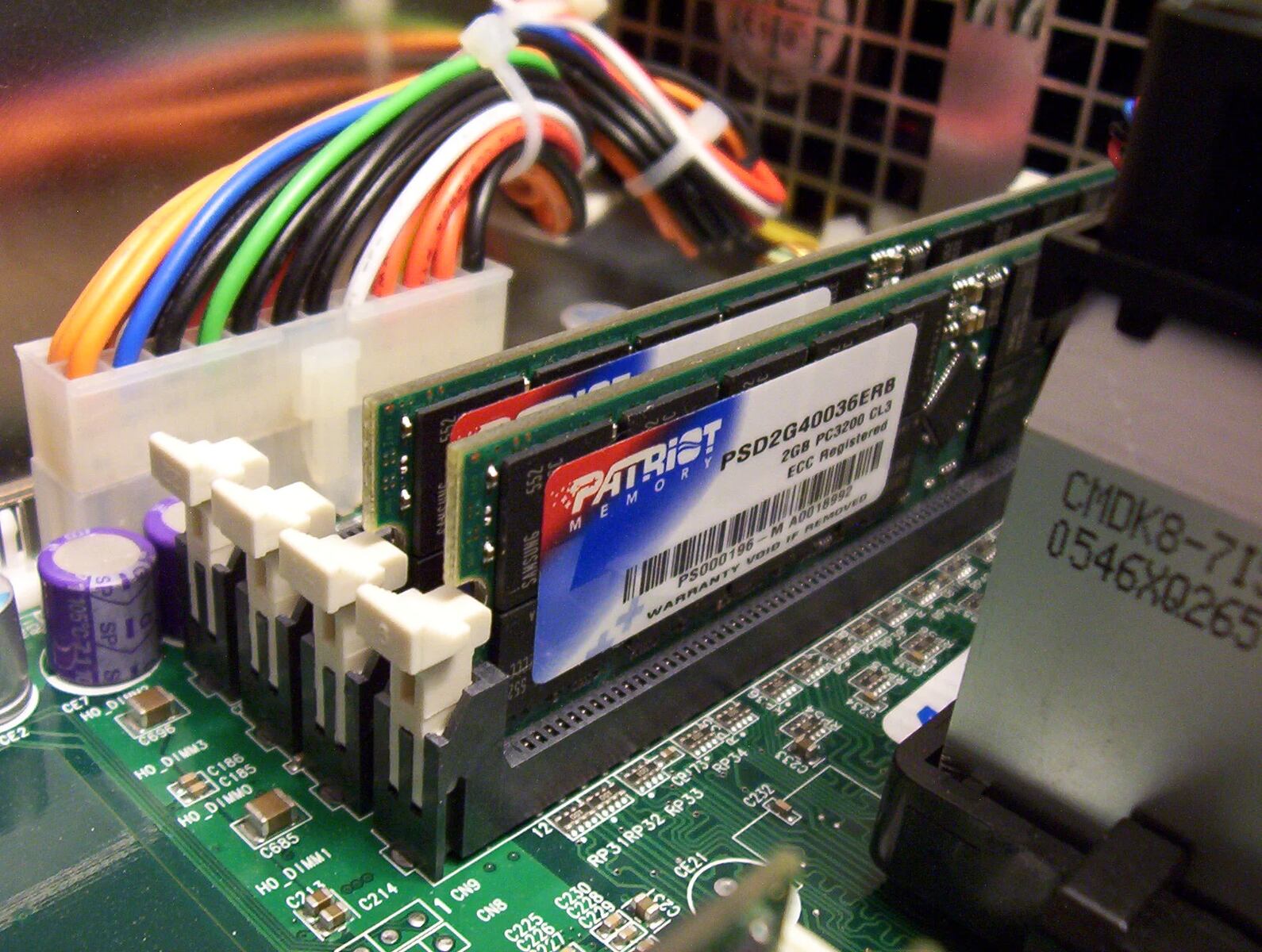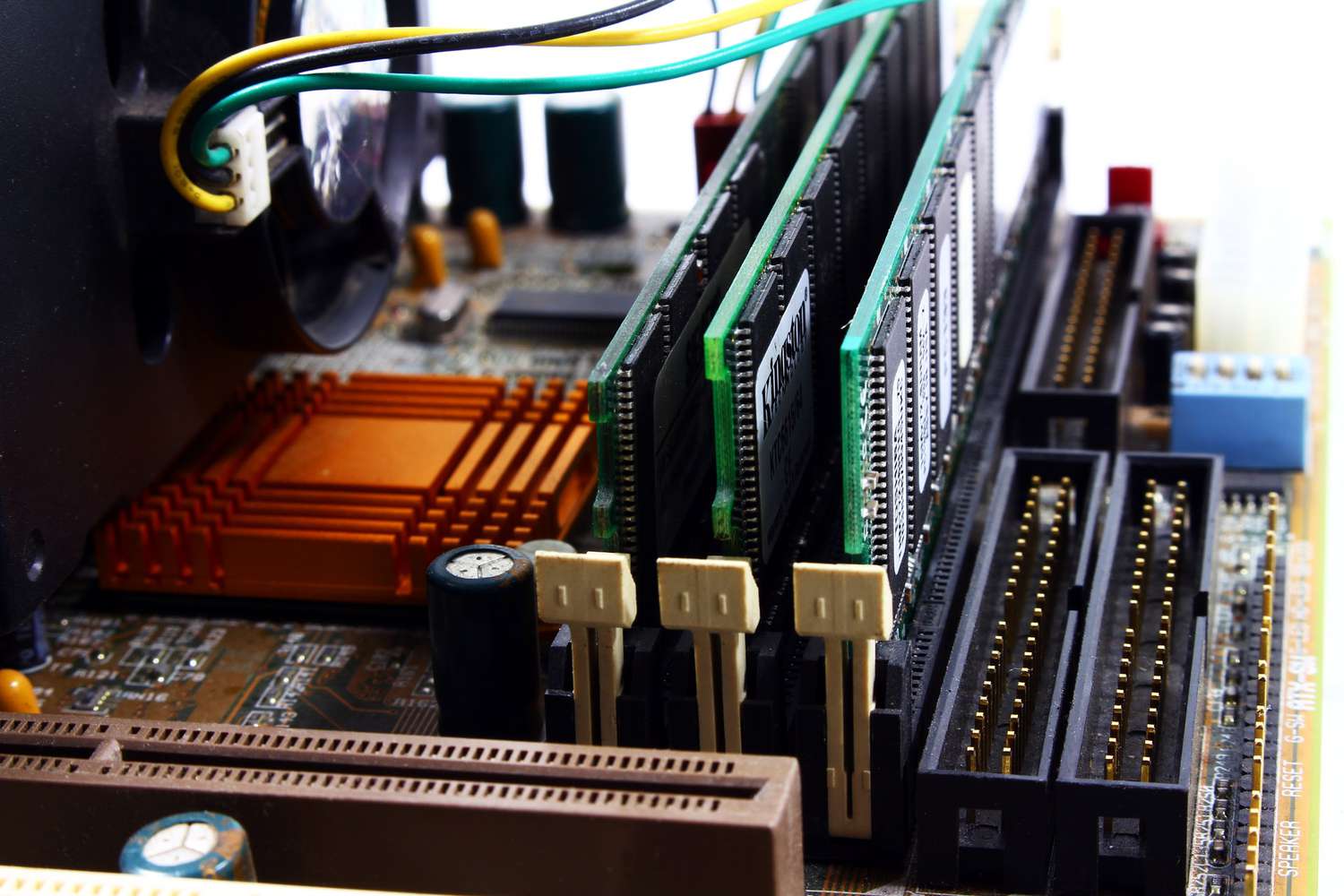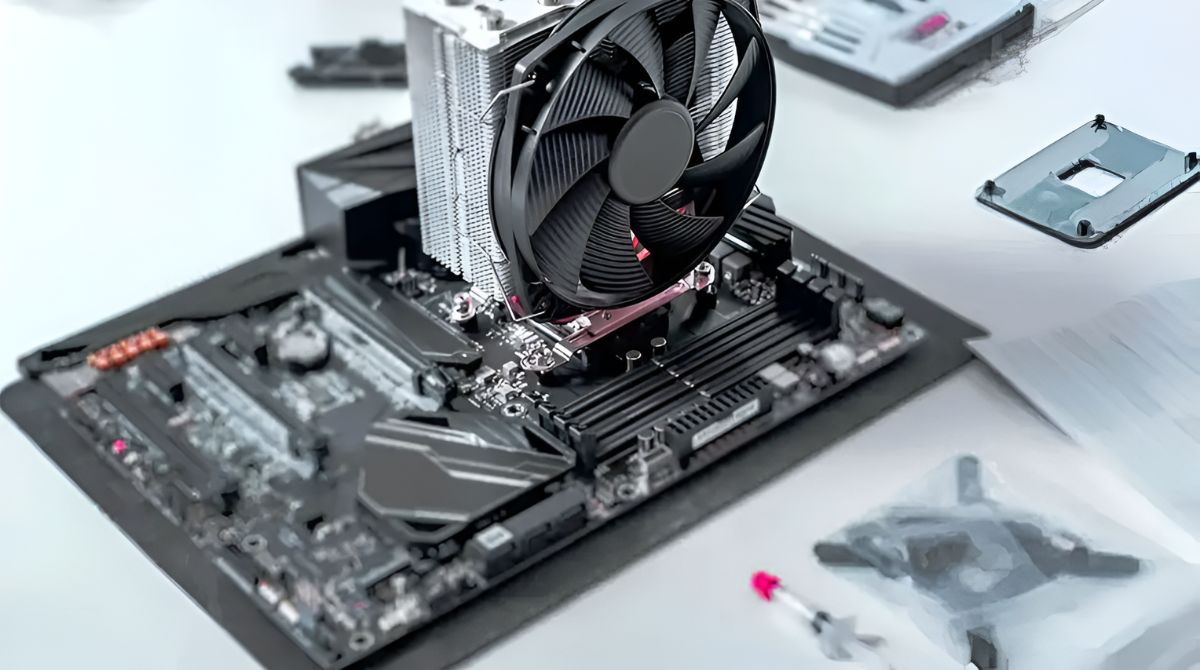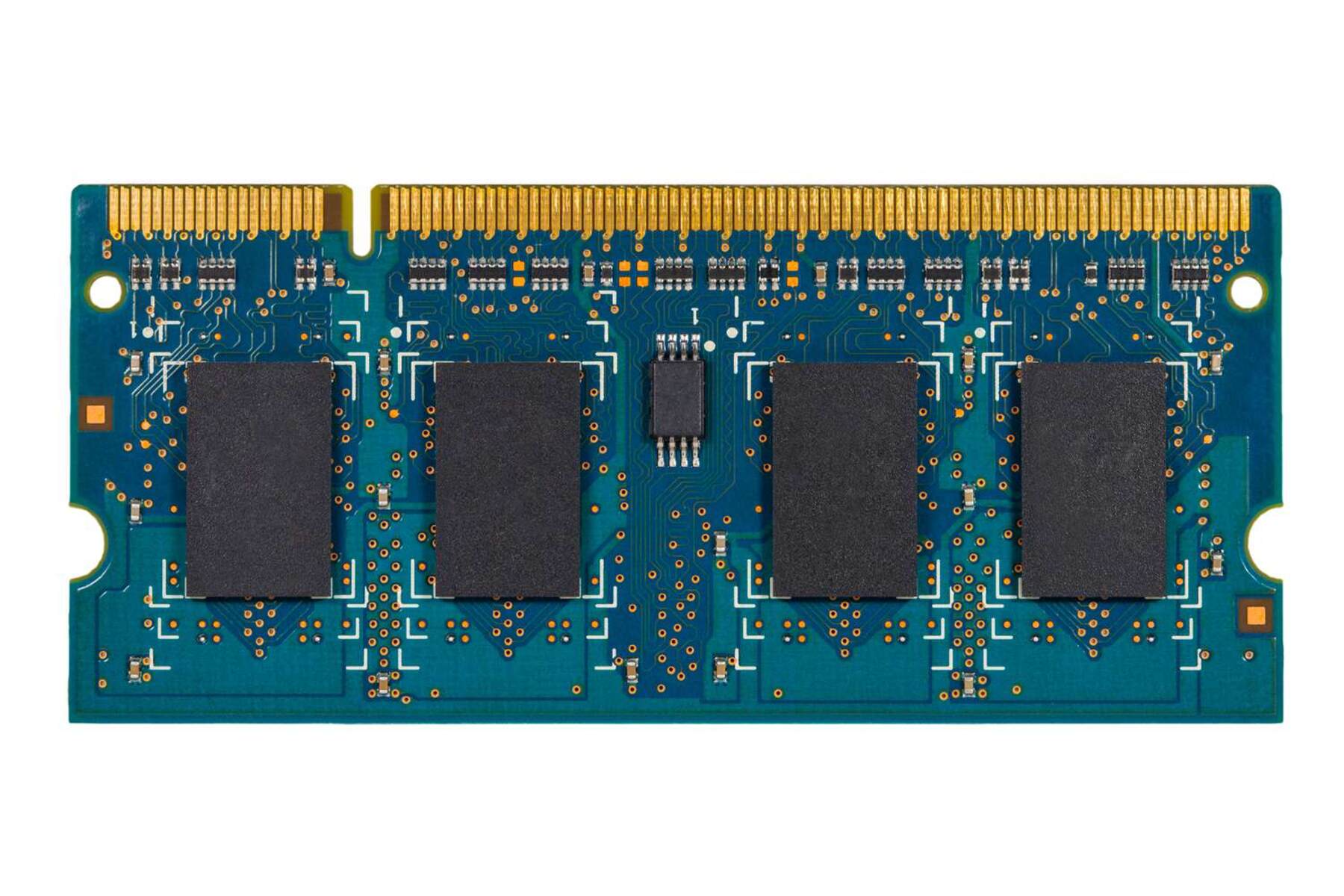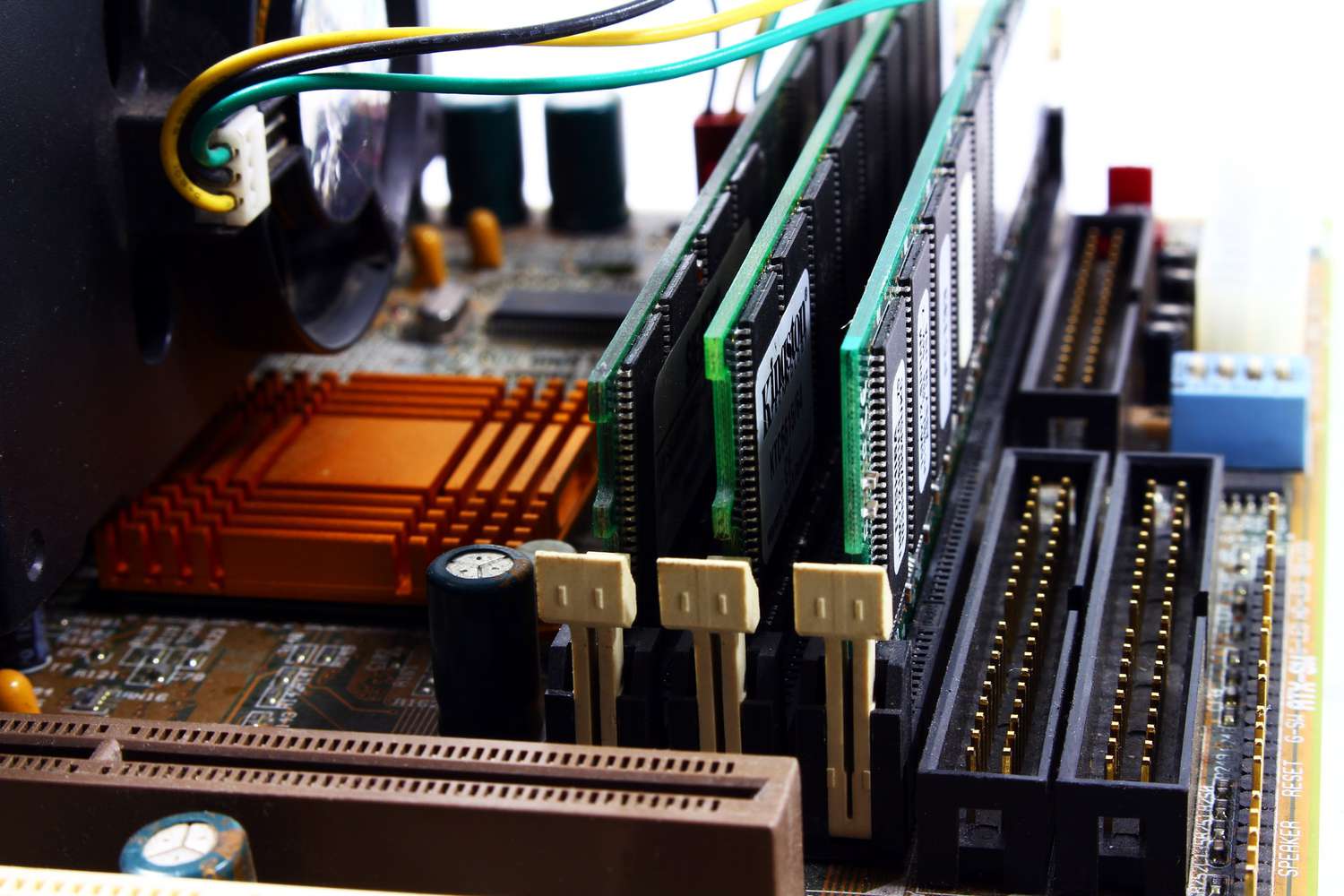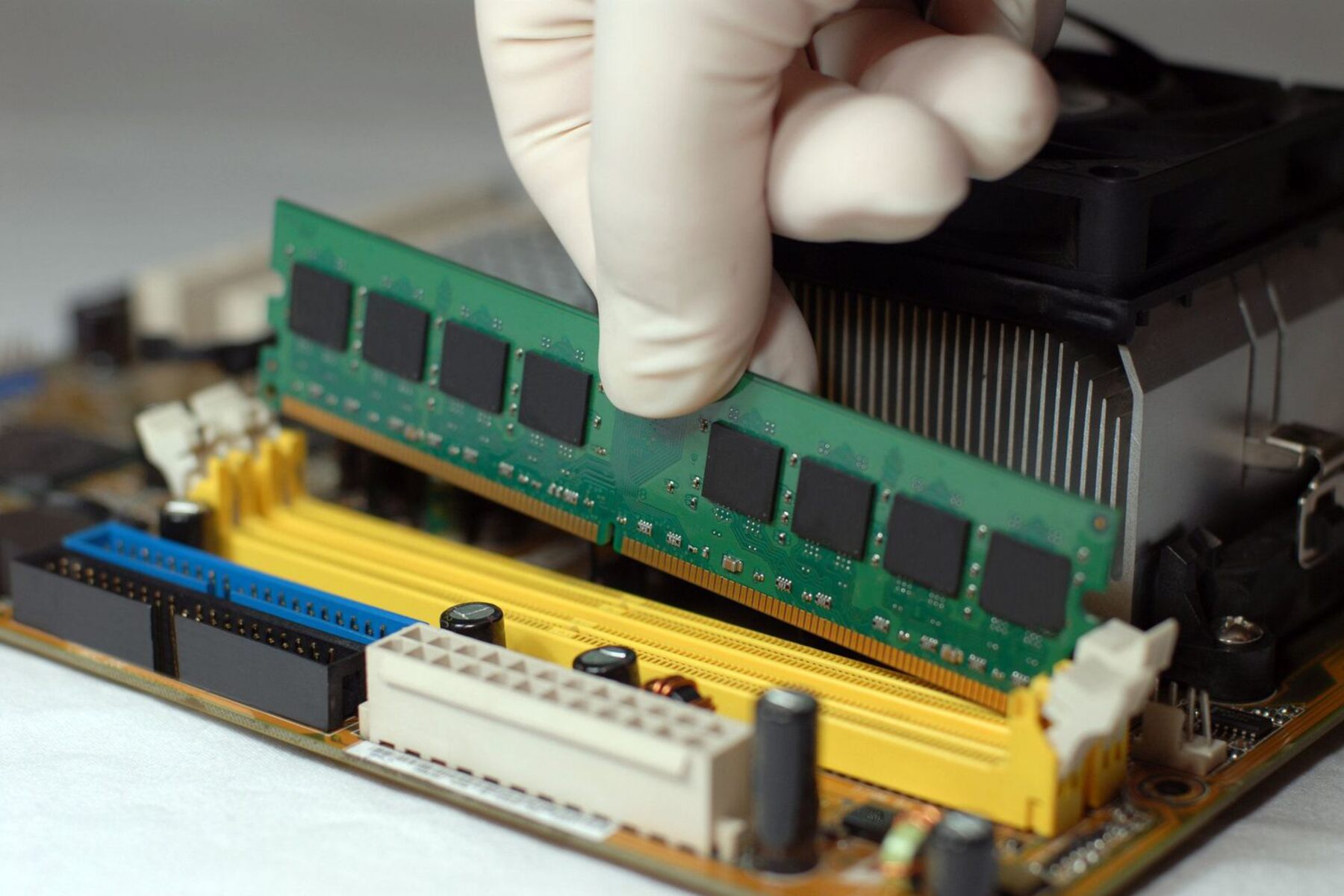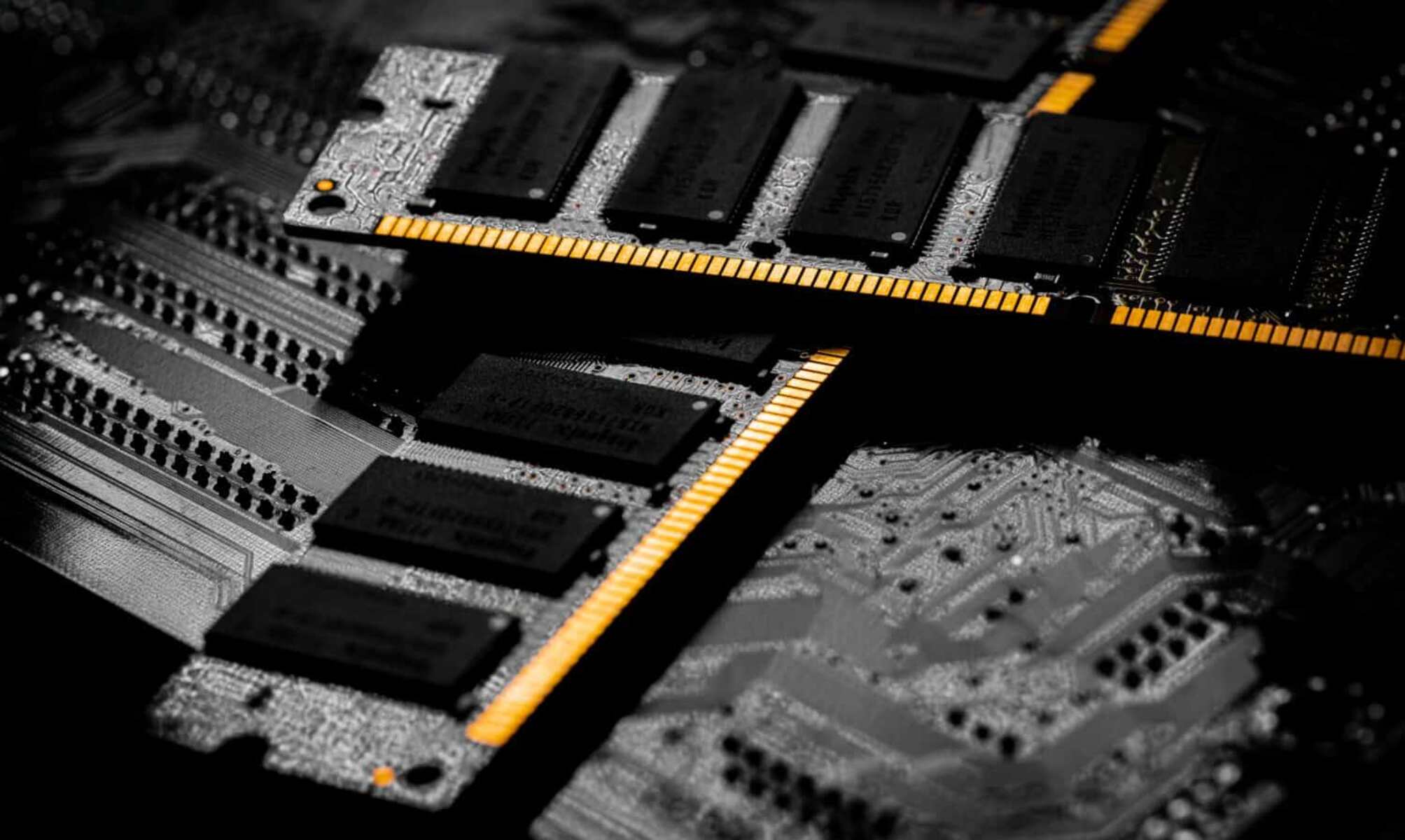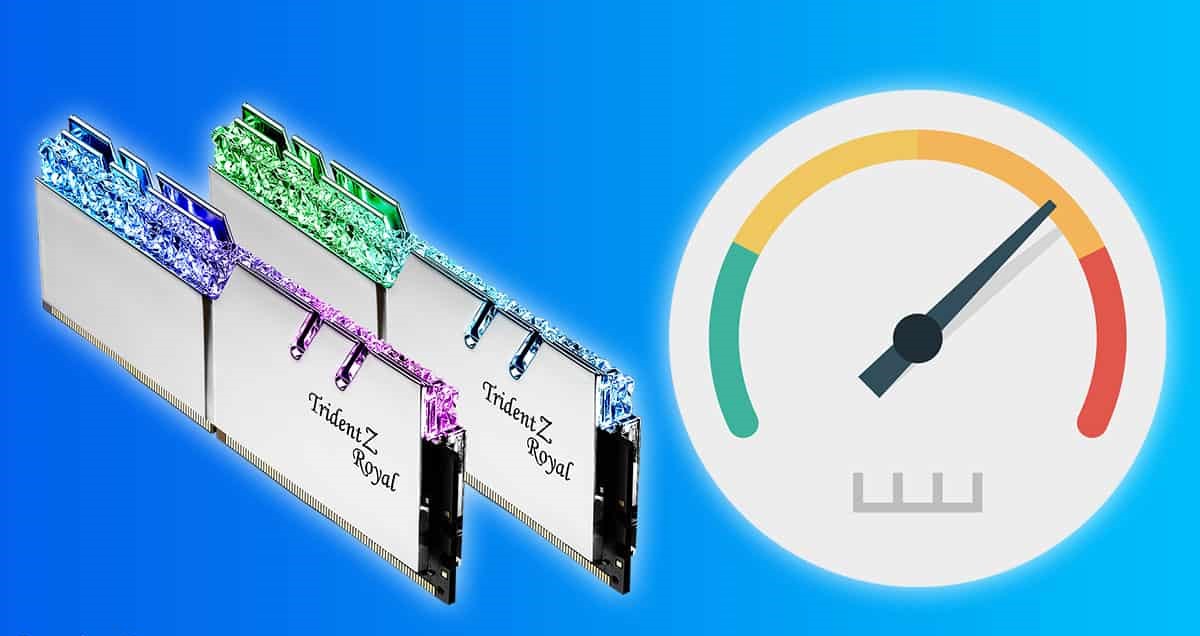Introduction
Matching RAM (Random Access Memory) to your system is crucial for optimal performance. RAM plays a vital role in the overall speed and efficiency of your computer. It acts as temporary storage for data that the CPU (Central Processing Unit) can access quickly, ensuring smooth multitasking and the seamless execution of programs and applications.
Choosing the right RAM for your system involves understanding its various aspects, such as types, capacity, speed, and compatibility. It can be a daunting task with the wide array of options available in the market. However, with a little knowledge and guidance, you can make the right decision and ensure that your system runs at peak performance.
This article will provide you with a comprehensive guide on how to match RAM to your system. We will explore different types of RAM, the amount of RAM you need, how to match RAM to your motherboard, the significance of RAM speed and CAS latency, and other factors to consider. By the end of this article, you will have a clear understanding of how to choose the right RAM for your computer setup.
Understanding RAM
RAM, which stands for Random Access Memory, is a type of computer memory that stores data that is actively being used by the CPU. Unlike storage devices such as hard drives or solid-state drives, RAM is volatile, meaning that its contents are lost when the power is turned off. RAM acts as a temporary workspace for the CPU, allowing it to quickly access and manipulate data while running programs or applications.
The primary function of RAM is to provide fast and temporary storage for data that needs to be accessed by the CPU. When you open a program or application, the required data is loaded into RAM so that the CPU can quickly retrieve it when needed. This allows for faster and more efficient multitasking, as the CPU can access the data stored in RAM much quicker than it can from a storage device.
RAM also plays a crucial role in determining the overall performance of your system. Having an adequate amount of RAM ensures that your computer can handle multiple tasks and applications simultaneously without slowing down. Insufficient RAM can lead to sluggish performance, frequent freezing, and even system crashes.
It’s important to note that RAM is different from storage devices, such as hard drives or SSDs, which store data long-term. RAM is temporary storage and is cleared when the system is powered off or restarted. This is why it’s important to save any important files or documents to a permanent storage device, as they will be lost if they are only stored in RAM.
In summary, RAM is a vital component of a computer system that provides fast and temporary storage for data that is actively being used by the CPU. It allows for faster multitasking and improved system performance. Understanding how RAM works and its importance will help you make informed decisions when choosing the right RAM for your system.
Types of RAM
When it comes to choosing RAM for your system, it’s important to understand the different types available. There are several types of RAM, each with its own characteristics and compatibility. Here are the most common types of RAM:
- DDR3: DDR3 (Double Data Rate 3) is an older generation of RAM that offers decent performance for everyday tasks. It operates at lower frequencies compared to newer generations and has lower bandwidth. DDR3 RAM modules have 240 pins and are not compatible with DDR4 or DDR5 slots.
- DDR4: DDR4 (Double Data Rate 4) is the mainstream RAM type found in most modern computers. It offers improved performance and higher clock speeds compared to DDR3. DDR4 RAM modules have 288 pins and are not backward compatible with DDR3 slots.
- DDR5: DDR5 (Double Data Rate 5) is the latest RAM technology available. It offers even higher performance and increased bandwidth compared to DDR4. DDR5 RAM modules have 288 pins and are not compatible with DDR4 or DDR3 slots.
In addition to these three main types, there are also variations such as ECC (Error-Correcting Code) RAM, which is designed for servers and workstations where data integrity is crucial, and SO-DIMM (Small Outline Dual Inline Memory Module) RAM, which is used in laptops and smaller form factor systems.
When choosing RAM, it’s important to ensure compatibility with your motherboard. Each motherboard has specific RAM slot types and supported RAM speeds. It’s essential to consult your motherboard’s documentation or manufacturer’s website to determine the compatible RAM types and maximum supported speeds.
Furthermore, it’s crucial to consider the capacity of the RAM modules. RAM capacity is measured in gigabytes (GB) and determines the amount of data that can be stored and accessed by the CPU at once. The required RAM capacity depends on your specific needs, such as the type of applications you run and the level of multitasking you expect from your system.
In summary, there are different types of RAM available, such as DDR3, DDR4, and DDR5. Each type offers various performance levels and compatibility with different motherboards. Understanding the types of RAM and their compatibility is essential when choosing RAM for your system.
How Much RAM Do You Need?
Determining the amount of RAM you need for your system depends on several factors, including your intended usage, the type of applications you run, and your budget. RAM capacity directly affects the overall performance and multitasking capabilities of your system. Here are some guidelines to help you determine the appropriate amount of RAM for your needs:
- Basic Usage: If you primarily use your computer for basic tasks like web browsing, email, and document editing, 8GB of RAM should be sufficient. This capacity allows for smooth performance when running these types of tasks simultaneously.
- Intermediate Usage: For more demanding tasks such as photo and video editing, running virtual machines, or gaming, 16GB of RAM is recommended. This capacity provides enough headroom for running resource-intensive applications without experiencing performance bottlenecks.
- Professional Usage: If you work with complex software like CAD programs, video editing software, or music production tools, you may benefit from having 32GB or more of RAM. These applications often require a significant amount of memory to handle large files and render complex projects efficiently.
Keep in mind that these recommendations are for general usage scenarios, and your specific needs may vary. It’s also important to consider future scalability when determining RAM capacity. If your budget allows, opting for more RAM than you currently need can provide room for future software advancements and ensure your system remains capable for a longer period.
It’s worth noting that the amount of RAM required by an application can vary depending on its specific requirements. Some software may have minimum recommended RAM specifications, and exceeding those requirements can lead to improved performance. It’s always beneficial to check the requirements of the applications you use frequently to ensure you have sufficient RAM.
Lastly, if you’re unsure about the amount of RAM you need, you can use system monitoring tools or task managers to observe your system’s RAM usage while running your typical workload. This will give you an idea of how much RAM is being utilized and whether you should consider upgrading.
In summary, the amount of RAM you need depends on your usage requirements, the type of applications you run, and your budget. For basic tasks, 8GB is typically sufficient, while intermediate users may benefit from 16GB. Professional users often require 32GB or more. Consider future scalability and the requirements of the applications you use to make an informed decision.
Matching RAM to Your Motherboard
When selecting RAM for your system, it is crucial to ensure compatibility with your motherboard. The motherboard determines the type of RAM it supports, as well as the maximum capacity and speed. Here are the key factors to consider when matching RAM to your motherboard:
- RAM Type: Check the documentation or manufacturer’s website of your motherboard to determine the supported RAM types. Common types include DDR3, DDR4, and DDR5. It is important to note that these different types of RAM are not interchangeable, so ensure that the RAM you choose matches the supported type of your motherboard.
- RAM Capacity: The motherboard specifies the maximum amount of RAM it can support. This can vary widely depending on the specific model. Ensure that the total capacity of your RAM modules does not exceed the maximum supported capacity of your motherboard. For example, if your motherboard can support a maximum of 32GB, you can install two 16GB RAM modules.
- RAM Speed: The speed of the RAM, measured in MHz, is another important consideration. The motherboard will have a range of supported speeds, so make sure that the RAM you choose falls within this range. It’s worth noting that the motherboard may run the RAM at a lower speed if it cannot handle the maximum speed of the RAM modules.
To further assist in matching RAM to your motherboard, some manufacturers provide a Qualified Vendor List (QVL) that specifies the specific models of RAM that have been tested and confirmed to work with the motherboard. Although not mandatory to follow, choosing RAM modules from the QVL can help ensure compatibility and minimize any potential issues.
It’s also worth mentioning that mixing different speeds or capacities of RAM modules can lead to compatibility issues. While some motherboards may support mixed configurations, it’s generally recommended to use RAM modules of the same type, capacity, and speed for optimal performance and stability.
When installing RAM modules, make sure to follow the motherboard’s guidelines regarding the correct slots to populate. Some motherboards may require specific slot configurations, such as running RAM modules in pairs for dual-channel functionality.
By considering the RAM type, capacity, and speed compatibility with your motherboard, you can ensure a smooth and hassle-free upgrade or installation process. Before making any purchases, always consult the motherboard’s documentation or manufacturer’s website to verify the supported RAM specifications.
In summary, matching RAM to your motherboard is crucial for ensuring compatibility and optimal performance. Consider the RAM type, capacity, and speed specifications provided by your motherboard to choose the right RAM modules. Following the motherboard’s guidelines and recommendations will help you successfully match and install RAM on your system.
RAM Speed and CAS Latency
RAM speed and CAS latency are important factors to consider when choosing RAM for your system. They can significantly impact the performance and responsiveness of your computer. Let’s take a closer look at these two key specifications:
RAM Speed: RAM speed, measured in megahertz (MHz), refers to how quickly the RAM can read and write data. It determines the bandwidth at which data can be transferred to and from the RAM modules. Higher RAM speeds result in faster data transfer rates, leading to improved performance in tasks that require frequent access to memory, such as gaming, video editing, and rendering.
It’s important to note that the actual performance gains from higher RAM speeds may vary depending on the specific applications or workload. Certain tasks, such as gaming, can see noticeable improvements with faster RAM, while others may not benefit as much. However, when paired with a powerful CPU and other components, faster RAM can help unleash the full potential of your system.
CAS Latency: CAS (Column Access Strobe) latency is a measurement of the delay between the memory controller requesting data from RAM and the actual output of that data. It is presented as a series of numbers (e.g., CAS 14 or CL14). A lower CAS latency indicates less delay and faster response times, resulting in improved performance.
When comparing different RAM modules, it’s essential to consider both the RAM speed and CAS latency together. For example, a RAM kit with a higher speed but a higher CAS latency may not necessarily outperform a kit with a lower speed but a lower CAS latency. It’s a trade-off between the two specifications, and the best choice depends on your specific needs and budget.
When choosing RAM, it’s important to ensure compatibility with your motherboard. The motherboard’s documentation will specify the supported RAM speeds and CAS latency ranges. It’s generally recommended to select RAM modules that fall within these supported ranges for optimal performance and stability.
Keep in mind that higher RAM speeds and lower CAS latencies typically come with a higher price tag. If you’re on a tight budget, it may be more practical to prioritize other components, such as the CPU or graphics card, before investing in top-of-the-line RAM.
In summary, RAM speed and CAS latency are two important specifications to consider when selecting RAM for your system. Higher RAM speeds can provide improved overall performance, while lower CAS latencies result in faster response times. Ensure compatibility with your motherboard’s specifications and consider your budget when making a decision.
Dual-Channel RAM
Dual-channel RAM is a configuration that allows for increased memory bandwidth and improved performance in certain applications. It involves installing memory modules in pairs, utilizing multiple memory channels on the motherboard. Let’s delve into the details of dual-channel RAM and its benefits:
With dual-channel RAM, the memory controller on the motherboard can access two memory modules simultaneously, effectively doubling the peak data transfer rate compared to a single-channel configuration. This increased bandwidth can lead to faster data transfer and improved system responsiveness, particularly in tasks that heavily rely on memory, such as multimedia editing or gaming.
To enable dual-channel RAM, you need to install matching memory modules in pairs. These modules should have the same capacity, speed, and timings. This ensures that the memory controller can efficiently distribute the workload across the channels, maximizing the benefits of the dual-channel configuration.
The performance gains from dual-channel RAM can vary depending on the specific applications and workload. Some tasks, such as video editing or 3D rendering, can experience noticeable improvements, while others may see more modest gains. However, in CPU-bound tasks that heavily rely on memory bandwidth, dual-channel RAM can help unleash the full potential of the system.
It’s important to note that not all motherboards support dual-channel RAM. You should consult your motherboard’s documentation or specifications to confirm its support for this configuration. Additionally, some motherboards may have specific memory slot configurations for enabling dual-channel mode. Refer to the motherboard’s manual to ensure proper placement of the memory modules for dual-channel operation.
If your motherboard supports dual-channel RAM, it’s generally recommended to install memory modules in pairs for optimal performance. However, if you have a single memory module and plan on upgrading in the future, it’s still possible to add another matching module later to enable dual-channel mode.
In summary, dual-channel RAM is a configuration that doubles the memory bandwidth by installing matching memory modules in pairs. It can result in improved system performance, especially in memory-intensive tasks. Check your motherboard compatibility and follow the recommended slot configurations to take advantage of the benefits offered by dual-channel RAM.
Additional Factors to Consider
While understanding the basics of RAM types, capacity, speed, CAS latency, and dual-channel configurations is crucial, there are some additional factors to consider when choosing RAM for your system. These factors can further enhance your overall experience and ensure compatibility with your specific needs. Let’s explore these additional considerations:
- Overclocking Capabilities: If you’re interested in overclocking your system for increased performance, consider RAM modules specifically designed for overclocking. These modules often have higher speeds, lower latencies, and better heat dissipation for stable overclocks. However, keep in mind that overclocking can shorten the lifespan of the RAM and may require additional cooling measures.
- Heat Spreader Design: RAM modules can generate heat during operation, especially when running demanding tasks. Modules with heat spreaders can help dissipate heat more efficiently, maintaining stable performance. While heat spreaders are not necessary for all systems, they can be beneficial if you’re concerned about heat buildup or if you plan on overclocking.
- Brand and Quality: Opting for reputable brands when choosing RAM is advisable, as they tend to provide better quality control, compatibility, and support. Established brands often offer warranties and have a track record of producing reliable RAM modules. It’s worth reading reviews and checking user feedback to ensure that the RAM you choose has a good reputation for performance and reliability.
- Budget and Price: RAM prices can vary depending on factors such as capacity, speed, brand, and features. It’s necessary to set a budget before making a purchase and consider the cost-effectiveness of the RAM modules that meet your requirements. Keep an eye on promotions, deals, and discounts to potentially find better value for your money.
- Future Upgradability: Consider your future plans for system upgrades. If you anticipate expanding your system in the future, it may be prudent to choose RAM modules that leave room for expansion. This could involve leaving empty RAM slots or selecting modules with lower capacity now and adding more modules later when needed.
Taking these additional factors into account will help you make a more informed decision when selecting RAM for your system. By considering overclocking capabilities, heat spreader design, brand reputation, budget, and future upgradability, you can optimize your system’s performance and ensure compatibility with your specific requirements.
Remember to consult your motherboard’s documentation or manufacturer’s website for specific compatibility guidelines and supported RAM configurations. Additionally, if you’re unsure about any aspect of choosing RAM, it can be beneficial to seek advice from knowledgeable sources or consult with a computer hardware specialist.
In summary, beyond the basics of RAM, factors such as overclocking capabilities, heat spreader design, brand reputation, budget, and future upgradability should be considered. These factors can enhance performance, improve compatibility, and provide flexibility for your system’s needs.
Conclusion
Choosing the right RAM for your system is crucial for optimal performance and efficiency. By understanding the different types of RAM, considering the amount of RAM you need, matching RAM to your motherboard, and considering factors such as RAM speed and CAS latency, you can make an informed decision.
RAM plays a vital role in multitasking, program execution, and system responsiveness. Having the right amount of RAM ensures smooth operation, reduces bottlenecks, and allows for seamless multitasking. Consider your usage requirements and choose the appropriate RAM capacity accordingly.
Matching RAM to your motherboard is essential for compatibility. Understand the supported RAM types, capacities, and speeds of your motherboard to ensure a seamless installation and optimal performance. Consult the motherboard’s documentation or manufacturer’s website to verify the specific RAM specifications supported by your motherboard.
RAM speed and CAS latency are important factors to consider, as they can impact overall system performance. Higher RAM speeds can provide increased data transfer rates, while lower CAS latencies result in faster response times. Ensure compatibility with your motherboard and consider balancing these two specifications based on your specific needs.
Additional factors, such as overclocking capabilities, heat spreader design, brand reputation, budget, and future upgradability, should also be taken into account when selecting RAM. These factors can further enhance performance, reliability, and flexibility based on your requirements and preferences.
Remember, choosing the right RAM requires a balance between performance, compatibility, and cost-effectiveness. Take the time to research and consider your specific needs to make an informed decision. By following these guidelines, you can ensure that your system is equipped with the optimal RAM configuration for a smooth and efficient computing experience.







